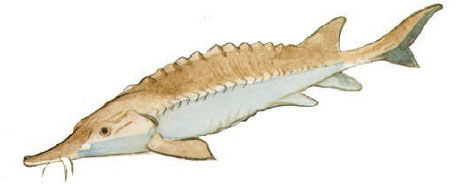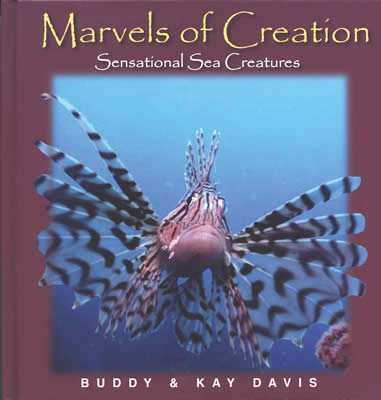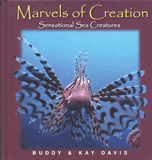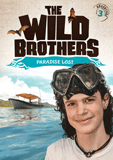
The sturgeon is a large bluish-black fish that is very famous for providing caviar. There are a dozen species located in temperate waters in the Northern Hemisphere. The sturgeon spends most of its time in the sea but returns to fresh water to spawn. The largest species of sturgeon, the beluga, lives entirely in fresh water.
The body of the sturgeon is streamlined and scaleless except for large plate-like scutes running from below the gills all the way to the tail. The snout of this fish is very long and broad, with four barbels under its mouth to help locate food. They are bottom feeders so they are constantly stirring up the mud and sand at the bottom. Sturgeons are slow-moving and spend most of their time searching for food.
The taste buds of the sturgeon are on the outside of the mouth. These help in the selection of food. They protrude from a toothless mouth to suck in the food. In fresh water, they eat insect larvae, worms, crayfish, snails, and other small fish. In the sea, their diet consists of mollusks, shrimp, other small crustaceans, worms, and small fish. The sturgeon is a slow feeder and can survive weeks without eating.
In the spring, the female lays two to three million eggs. They hatch in three to seven days and are about one-half inch (1.3 cm) long. The eggs are black in color and very sticky, which adheres them to water plants and stones.
Sturgeons are commercially fished for their meat and oil as well as caviar. They are also caught for what is called isinglass that comes from the swim bladder. This is used for special cements and waterproofing materials, but mainly it is used in clearing white wine.
Sturgeon
Chondrostei • Acipenseridae
Acipenser oxyrhinchus
Length: 8 feet, 3 inches (2.5 m)
Weight: up to 1,500 pounds (680 kg)
Life Span: up to 75 years
Special Design Feature: The sturgeon has four
sensitive barbels, slender flaps of skin resembling
whiskers, under its mouth, which help locate food
under the mud as the sturgeon scrapes the bottom
looking for food.
Did You Know? The sturgeon is well-known as a
supplier of caviar. One fish can give up to 400
pounds (181 kg) of caviar.

Marvels of Creation: Sensational Sea Creatures
Brings the world of the sea alive in a unique and colorful way with photographs, a page of facts and commentaries.
Browse Kids BookRecommended Resources
- © 2024 Answers in Genesis
- Privacy Policy
- Contact
- About



